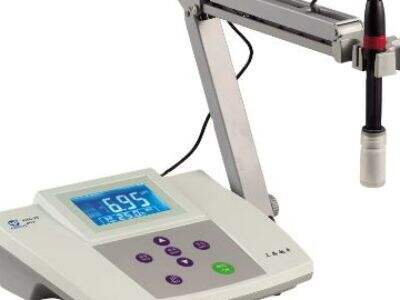Collecting a pile of objects and weighing them is a fun experiment that you may have done in school. Did you know that how accurately you measure something is based on how it was calibrated? That's called calibration, and it is very important because it tells your balance to read the right numbers. With the help of AIK find out how to calibrate your electronic balance for the best results.
The Importance of Calibration for Getting Accurate Measurements:
Can you think if your balance says a pencil weighs 10 pounds! That would be silly, right? Calibration is like training your balance to measure the weight properly. Once you calibrate your balance, it can ensure you receive very accurate measurements each time. As such, you can rely on the numbers it gives you, no matter if you’re weighing an infinitesimal paperclip or a mammoth apple.
How to properly calibrate an electronic balance?
With AIK help, calibrating your electronic balance doesn`t sound that complicated, after all! Here’s a guide to calibrate you just a bit:
Switch plasma balance on and wait for 0 to appear.
Gently place a calibrating weight on the balance. Ensure that it is not broken and is clean
Press the calibration button on the scale and wait for it to complete.
Remove the calibration weight and ensure that balance displays 0 again. If it does, your balance is primed for accurate measurements!
How to Ensuring You Are Measured Correctly:
Similar to brushing your teeth every day to ensure they remain healthy, your electronic balance requires regular calibration in order to maintain accuracy. These are some tips that can help you continue to get accurate results:
To do this accurately, calibrate your balance at the same time of day.
Regularly clean your balance to prevent dust or dirt from compromising its accuracy.
A clean, dry storage space for your calibration weights is essential to ensure that they last.
Calibration of your Electronic Balance: Dos and Don'ts
Some points to keep in mind when calibrating your electronic balance. Here’s a quick guide:
Dos:
Use calibration weights designed for your balance.
Follow the manufacturer's instructions for proper calibration.
Track the date you calibrated your balance to ensure that you do so in a timely manner.
Don'ts:
Calibrating weights will rarely provide correct outcomes — do not use random things!
Even if your balance appears to be functioning smoothly, never skip the calibration stage. Thus periodic calibration would be needed for measurement accuracy.
CAPTION: After you calibrate, do not shift too much of your balance around — it can alter its accuracy.
Calibration: Make Sure Your Measures are Right!
In the end, it comes down to using proper calibration methods to ensure that your measurements are accurate and you can trust the numbers your electronic balance is showing you. Having the AIK team to guide you through calibration of your balance, you can be sure that you'll get highly uh scale accurate measurements, every time you weigh something.
To sum up,Laboratory instrument a calibrating technique gets the measurement of your electronic balance super accurate. [pullquote]Bottom line: Following these steps with proper calibration, routine maintenance, dos and don’ts, and using the right methods will make sure that your balance provides you with the best results for all of your weighing adventures.|||||About the Author:|||Taryn McGowan is a trained scientist with experience at the intersection of science and communication. If she’s not in the lab working with her hands, she is probably outside working with her mind. To find out more about her love for science and science communication, check out her blog! So pick up your AIK electronic balance now, follow these tips and you are on your way to measuring like a pro!












































